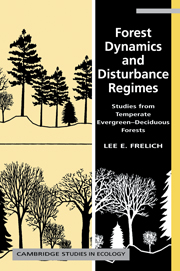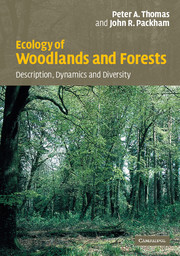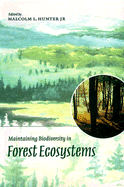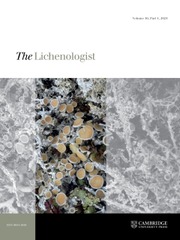Forest Dynamics and Disturbance Regimes
Lee Frelich provides a major contribution to the study of temperate-zone forest dynamics by considering three important themes: the combined influence of wind, fire, and herbivory on the successional trajectories and structural characteristics of forests; the interaction of deciduous and evergreen tree species to form mosiacs; and the significance of temporal and spatial scale with regard to the overall impact of disturbances. These themes are explored via case studies from the forests in the Lake States of Minnesota, Wisconsin and Michigan, where the presence of large primary forest remnants provides a unique opportunity to study the long-term dynamics of near-boreal, pine, and hardwood-hemlock forests.
- Focuses on the three main disturbances within forest ecosystems - fire, wind and grazing
- Analyses the conditions that lead to stability and disruption of forest structure and composition
- Shows how disturbances and other factors lead to the formation of forest mosaics across the landscape
Reviews & endorsements
"The work is a useful guide for the researcher of forest ecology." Southeastern Naturalist
"Frelich has eloquently synthesized current knowledge of forest dynamics of the Great Lakes Region where he has done extensice research.... [T]his book is a valuable resource for upper-division undergraduate and graduate students, faculty, and researchers studying disturbance ecology and forest dyamics." Choice
"...this book is well written and...the tables and figures are clear. The citations are adequate without being overwhelming or distracting. The author presents a short introduction to each chapter in which he explicitly links that chapter to both previous and subsequent chapters, thus helping the reader to keep the big picture in mind...In my opinion, this is an essential book for anyone doing research on the disturbance ecology of temperate forest ecosystems." Ecology
"For anyone interested in forested ecosystems, or an ecosystem in general, Frelich's book provides very useful information on these processes [of forest dynamics and disturbance regimes].... Frelich does an excellent job of defining terms and concepts.... This would make an excellent textbook for a graduate-level course. For anyone involved with forest stand dynamics, this can serve as a great source/reference on the how's and why's of disturbances." Natural Areas Journal
"This book privdes rich and substantive insight into this well-studied -- and much-loved -- forest region at the deciduous-boreal interface." The Canadian Field Naturalist
"I strongly recommend this book..." Forest Science
Product details
December 2004Adobe eBook Reader
9780511059995
0 pages
0kg
94 b/w illus. 24 tables
This ISBN is for an eBook version which is distributed on our behalf by a third party.
Table of Contents
- Preface
- Acknowledgements
- 1. The forest setting
- 2. The disturbance regime and its components
- 3. Sampling and interpretation of stand disturbance history
- 4. Disturbance, stand development, and successional trajectories
- 5. The study of disturbance and landscape structure
- 6. The disturbance regime and landscape structure
- 7. Disturbance in fragmented landscapes
- 8. Forest stability over time and space
- References
- Appendix I
- Index.









